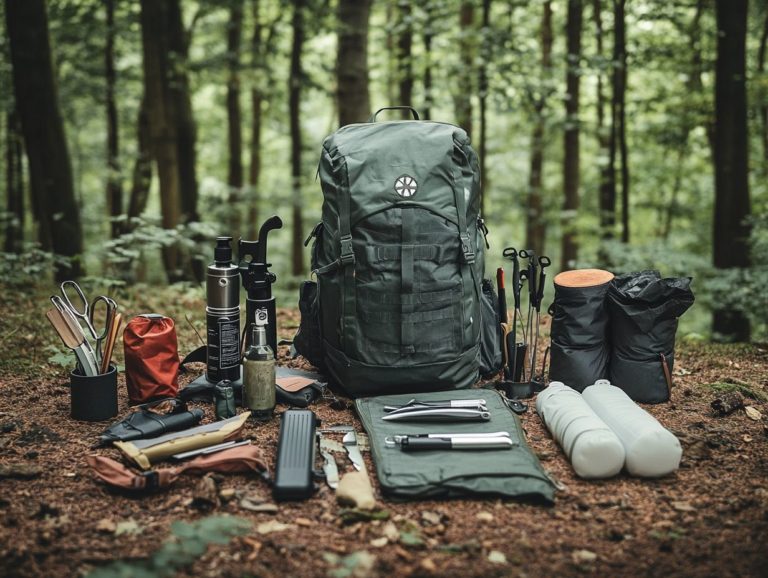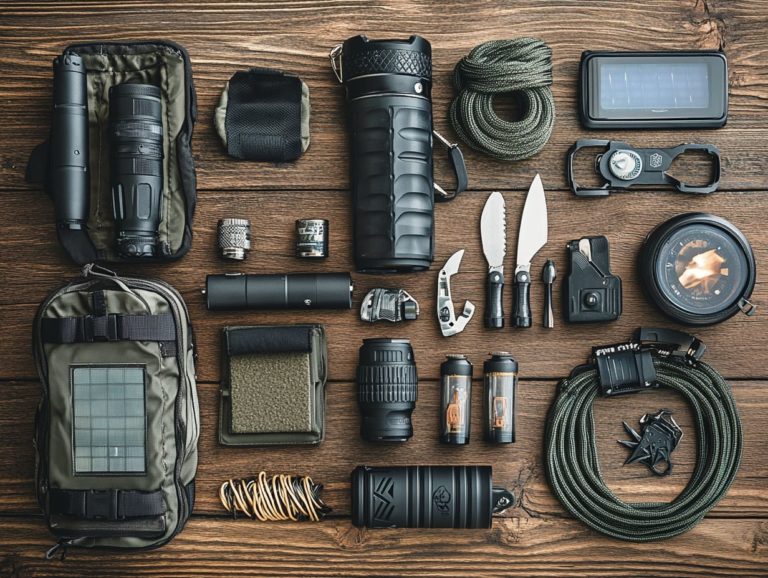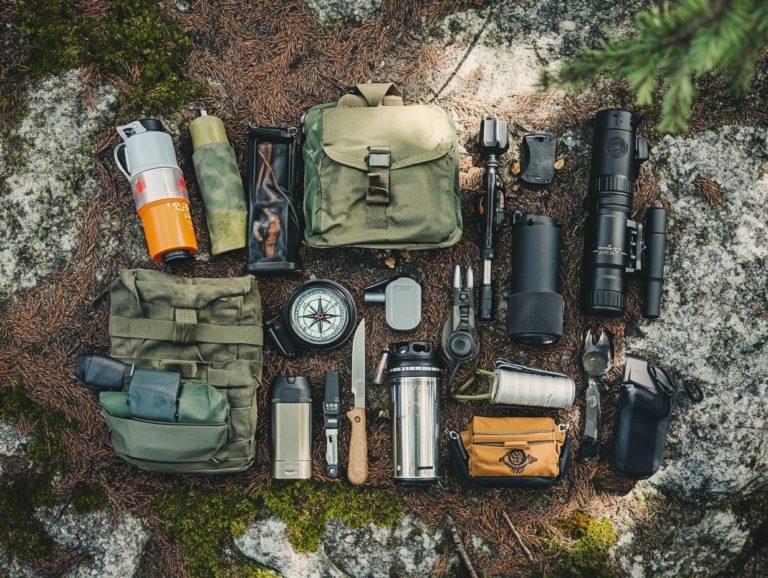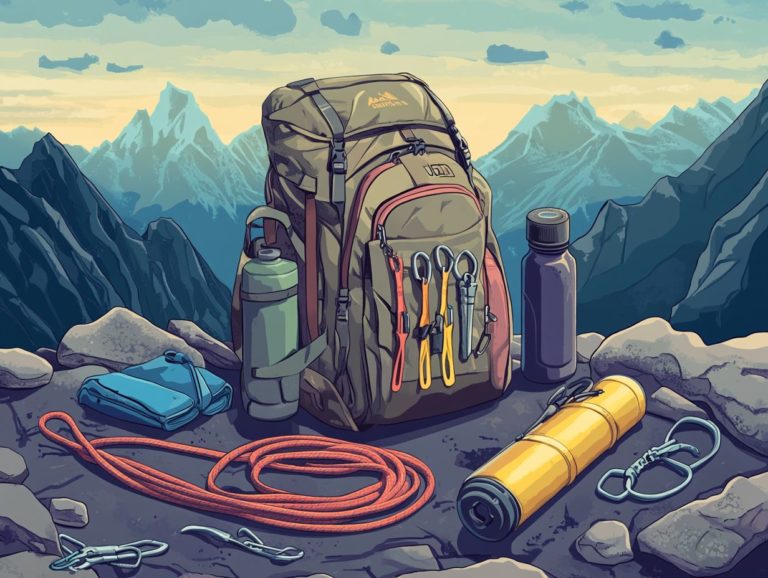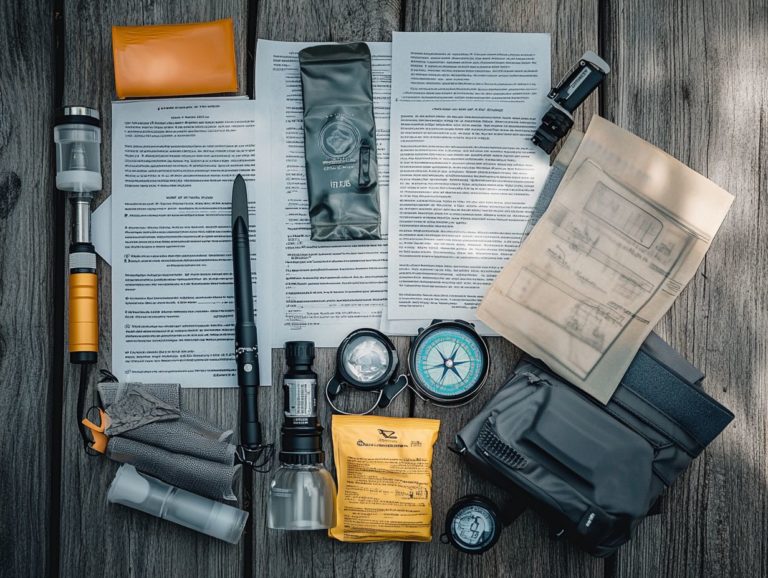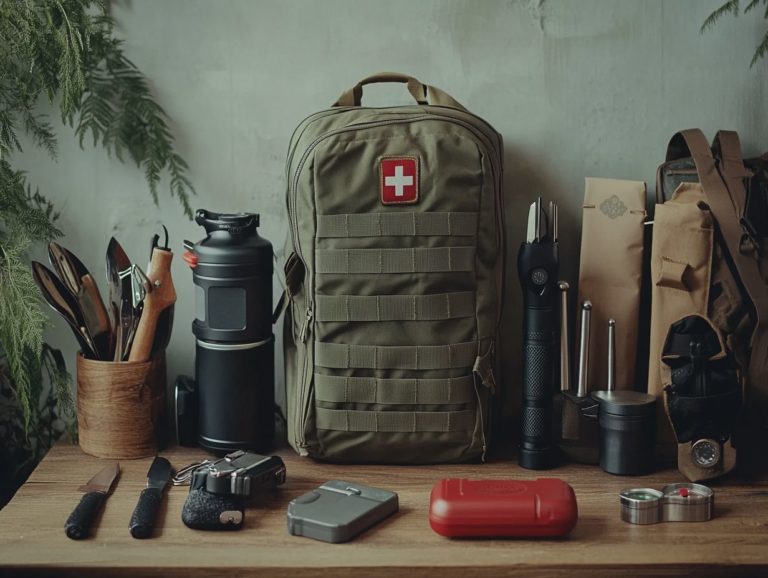5 Survival Gear Myths Debunked
Survival myths can cultivate unnecessary fear and confusion among outdoor enthusiasts and survivalists.
Many individuals believe that you don t need to spend a lot on gear to survive or that equipment is only necessary during critical situations. They often overlook the practicality of common sense and essential survival techniques. Some even think they can rely solely on nature or assume their experience is enough, ignoring the importance of preparation.
Let s debunk five common survival myths surrounding survival gear, guiding you toward a clearer understanding of what you truly need for your next adventure. Stay with us to ensure you re ready for anything!
Contents
- Key Takeaways:
- What are Survival Gear Myths?
- Myth #1: You Need Expensive Gear to Survive
- Myth #2: Survival Gear is Only for Extreme Situations
- Debunking the Myth
- Myth #3: You Can Rely on Natural Resources Instead of Gear
- Debunking the Myth
- Myth #4: You Don’t Need Survival Gear if You’re Experienced
- Debunking the Myth
- Myth #5: Gear is Useless Without Proper Training
- Debunking the Myth
- Frequently Asked Questions
- What are the top 5 survival gear myths that have been debunked?
- Is it true that moss can be used as a water filter in a survival situation, or is this just another one of the survival myths that need to be addressed?
- Can consuming snow really provide enough hydration in a survival situation?
- Can a mirror really be used to start a fire in a survival situation?
- Is it safe to rely on alcohol as a disinfectant for wounds in a survival situation?
- Can a dead cellphone really be used for navigation in a survival situation?
Key Takeaways:
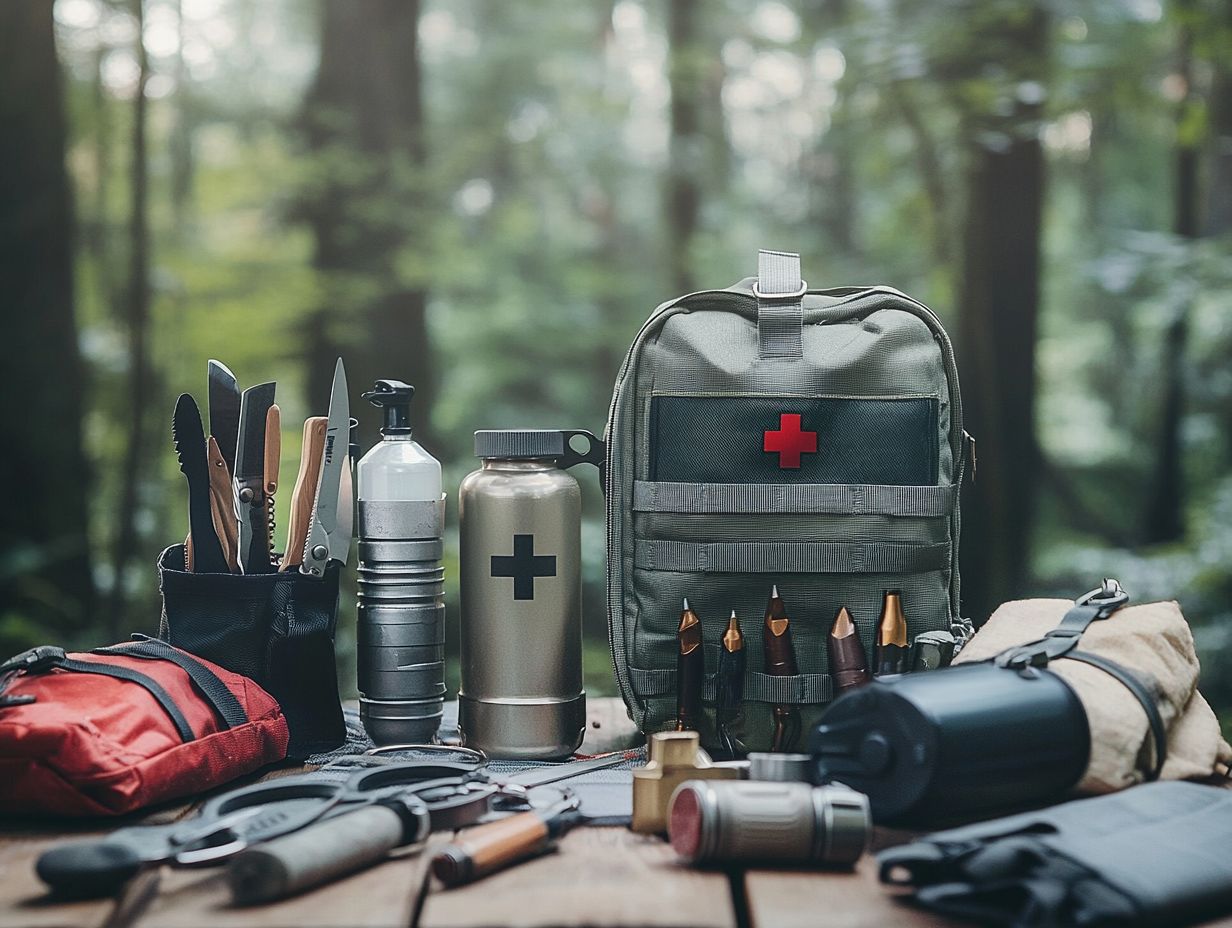
- Survival gear doesn’t have to break the bank basic tools like a magnesium fire starter or lighter can be effective.
- Survival gear is useful in both extreme and everyday situations don t underestimate its importance.
- Natural resources can be unpredictable always have necessary gear for survival, like survival kits and first aid kits.
What are Survival Gear Myths?
Survival myths can lead you astray regarding the essential tools needed for wilderness survival and emergency situations, like shelter myths and food myths. Misconceptions may include the belief that you must invest in expensive gear or that you can rely solely on nature’s bounty without proper preparation.
Understanding these myths, including those around climbing equipment, is important for honing your critical thinking and practical skills in survival scenarios, where having the right tools can truly mean the difference between life and death. Check out the top 10 climbing gear myths debunked to enhance your knowledge.
By debunking these common survival myths, you arm yourself with accurate knowledge, allowing for more effective preparation techniques. To enhance your understanding, check out the top 10 camping myths debunked. Misunderstanding the functionality and application of essential gear could leave you unprepared during critical moments. For example, relying on makeshift tools or neglecting first aid supplies can severely hamper your ability to manage emergencies effectively.
Grasping the capabilities and limitations of various survival techniques, like building a shelter or finding safe drinking water, enables you to make informed decisions, ultimately enhancing your safety in unpredictable environments. Prioritizing education in survival cultivates a culture of preparedness, equipping you to tackle challenges with confidence.
Myth #1: You Need Expensive Gear to Survive
It s a common belief that survival gear has to come with a hefty price tag to be effective, leading to unnecessary spending. This misconception creates the idea that you can t possibly survive without the best gear.
Debunking the Myth
Debunking the myth that you need expensive gear for survival shows that common sense and essential skills often carry more weight in real-life situations.
In fact, utilizing basic tools like a magnesium fire starter, which is a tool used to start fires easily, or a simple lighter can dramatically improve your ability to meet survival needs efficiently. These tools, while inexpensive, can create flames crucial for warmth, cooking, and signaling for help.
A mix of practical knowledge and a sprinkle of creativity enables you to thrive. Knowing how to effectively use these tools in different environments can mean the difference between thriving and merely surviving. By improvising and adapting to what you have at hand, you can devise solutions that far exceed the capabilities of high-tech gear.
Myth #2: Survival Gear is Only for Extreme Situations
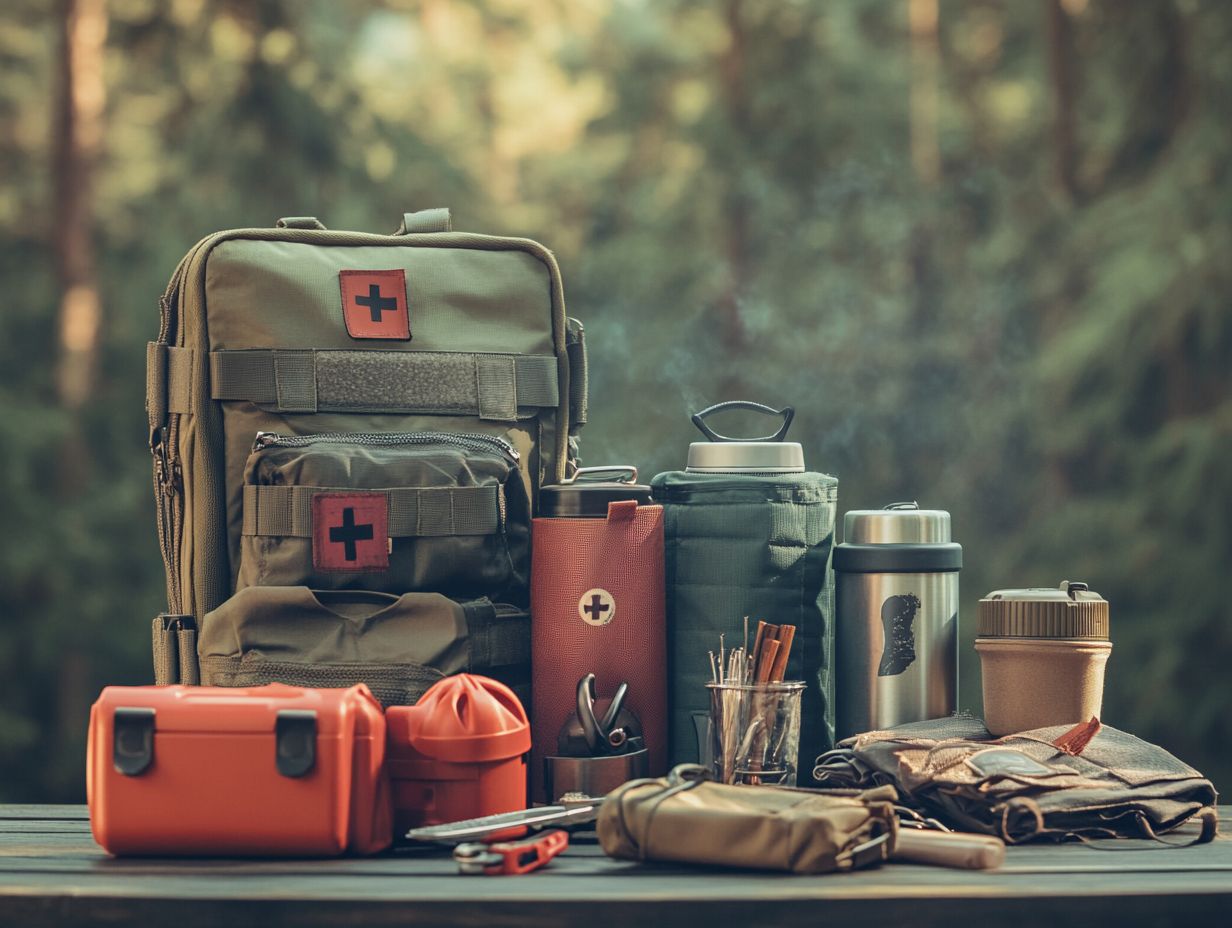
Many people mistakenly believe that survival gear is only essential for extreme situations, which can lead them to overlook its importance in everyday emergencies.
Recognizing the value of preparedness in all circumstances ensures you are equipped to handle unexpected challenges, no matter how minor they may seem.
Debunking the Myth
Debunking the myth that survival gear is only for extreme situations highlights the importance of being prepared for any potential emergency.
Everyday life can throw curveballs at you whether it s a sudden natural disaster like an earthquake or hurricane, or a personal crisis, such as your car breaking down in a remote area. Having the right survival gear at your fingertips can truly make a difference during these unexpected moments.
For a well-equipped bug-out bag, consider packing essentials like survival matches for fire starting, a reliable flashlight, and water purification systems.
- Water purification systems
- Non-perishable food
- A reliable flashlight
A well-stocked first aid kit is crucial as well, ready to handle everything from minor cuts and scrapes to more serious injuries. With this, you can jump into action confidently!
When you combine critical thinking with this level of preparedness, you not only equip yourself for the unplanned but also cultivate a sense of security and confidence in the face of uncertainty. Are you ready to be prepared?
Myth #3: You Can Rely on Natural Resources Instead of Gear
The notion that you can depend exclusively on natural resources, like plants and freshwater fish, without the appropriate gear is among the most dangerous survival myths. You must recognize the risks now! Relying solely on these resources without preparation can lead to significant dangers.
Debunking the Myth
In debunking the myth that natural resources can simply replace survival gear, it becomes clear that specific survival skills are vital for safely and effectively utilizing those resources.
You need to identify which plants, insects, and animals are nutritious and safe for consumption; after all, making the wrong choices can lead to dire consequences. Survival gear plays a crucial role in this journey, as it provides you with the necessary tools for hunting fur-bearing mammals and foraging for edible plants.
With the right gear, you enhance your ability to gather food, purify water, and build shelter, turning the wild environment into a nurturing ally rather than a perilous adversary. By understanding the dynamic between available resources and the appropriate tools, you can navigate your surroundings with confidence and skill.
Myth #4: You Don’t Need Survival Gear if You’re Experienced
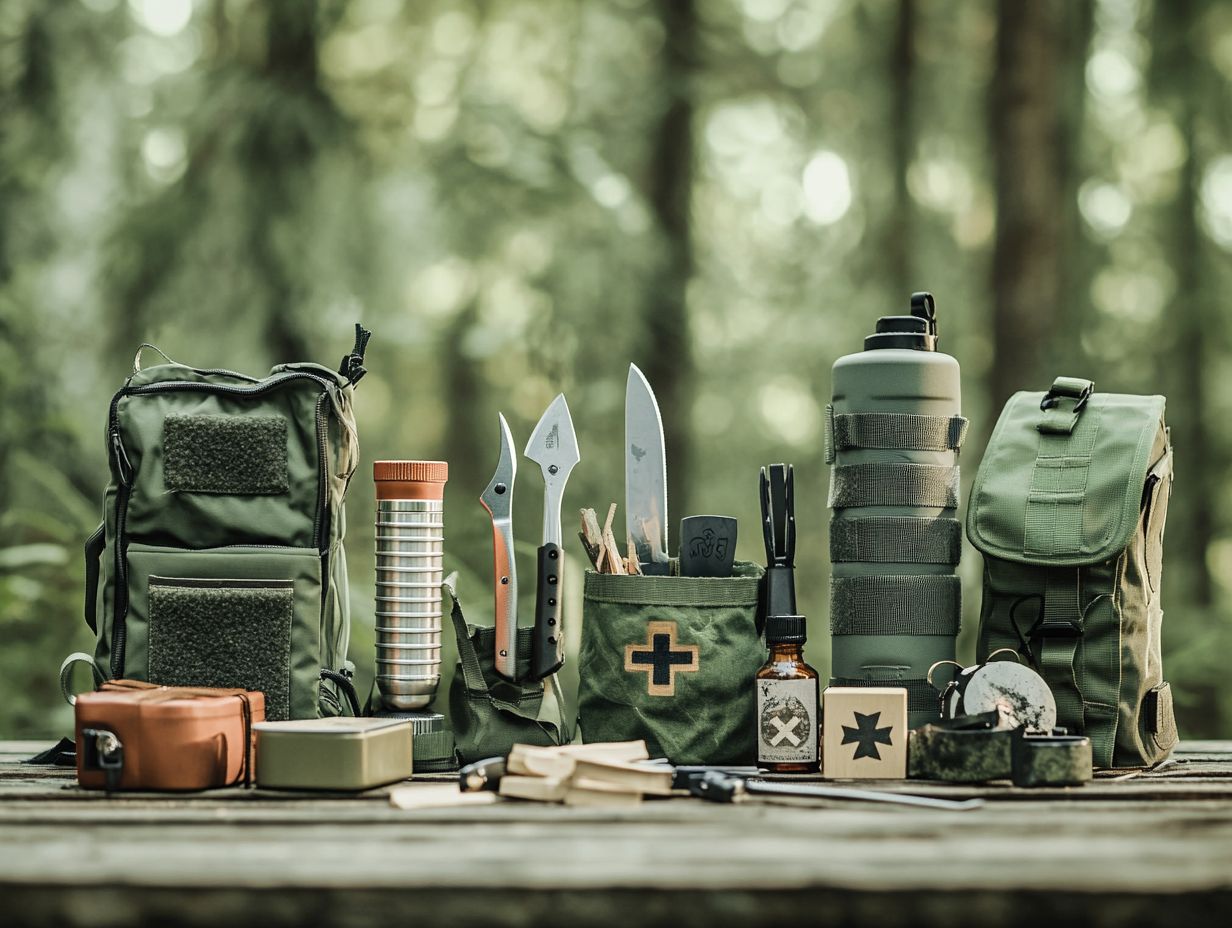
Many seasoned survivalists may find themselves caught in the misconception that their skills can fully substitute for adequate survival gear. This belief can result in severe repercussions in critical survival scenarios.
Debunking the Myth
Debunking the notion that experience alone renders survival gear unnecessary reveals how practical advice and preparedness can elevate your survival techniques.
Even if you’re a seasoned survivalist, investing in high-quality equipment can give you an extra edge in critical situations. For instance, a reliable multi-tool can streamline numerous tasks during an emergency, enabling you to tackle everything from food preparation to building a shelter with ease. However, be aware of the most common survival gear mistakes to ensure your gear is truly effective.
A well-stocked first aid kit ensures that minor injuries don t escalate, while a durable water filter transforms contaminated sources into safe drinking water. Essential items like fire starters and emergency blankets can profoundly influence the outcome of a tough scenario, underscoring that the right gear is an invaluable asset for everyone, regardless of their expertise.
Myth #5: Gear is Useless Without Proper Training
It s a prevalent misconception that survival gear is rendered ineffective without extensive training. However, even basic gear can offer substantial benefits in a wilderness survival scenario.
Debunking the Myth
By debunking the notion that gear is worthless without training, you can highlight how survival techniques are not only learnable but can also be practiced with simple tools like first aid kits.
Survival situations can appear at any time, which makes it essential for you to be armed with knowledge that complements your gear. For example, mastering the effective application of a tourniquet, a tool used to stop severe bleeding, is crucial when dealing with severe injuries. To help first-timers prepare, consider these 5 survival gear tips, even if that tourniquet is merely a piece of cloth and a stick.
Everyday items such as a whistle or a flashlight can provide you with substantial advantages in scenarios where communication and visibility are paramount. Learning basic fire-starting techniques with a lighter or matches, alongside the right materials from a survival kit, can be nothing short of lifesaving.
With the right survival education, anyone can become a hero in an emergency!
Frequently Asked Questions
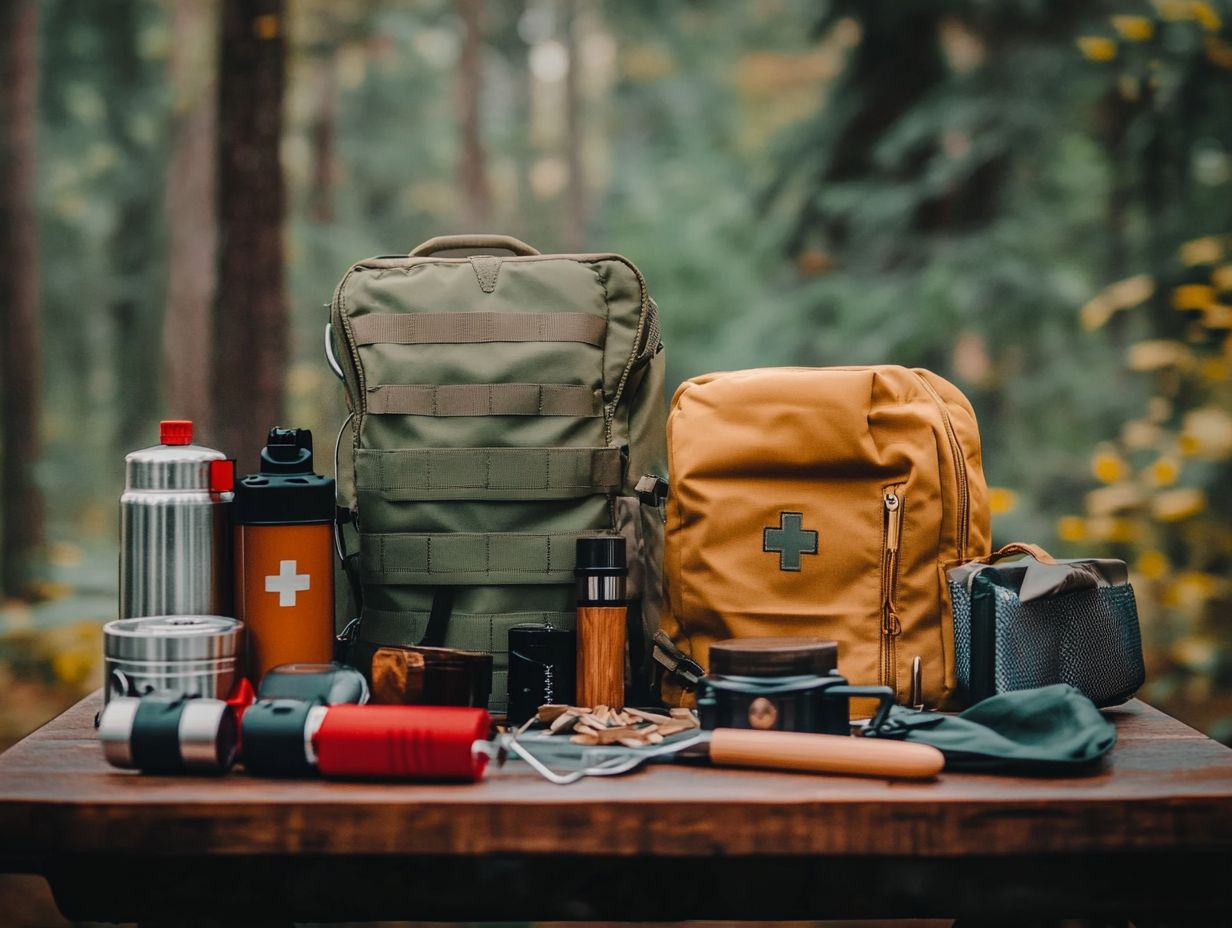
What are the top 5 survival gear myths that have been debunked?
The top 5 survival gear myths that have been debunked include using moss as a water filter, consuming snow as a source of water, using a mirror to start a fire, relying on alcohol as a disinfectant, and using a dead cellphone for navigation. These are just a few survival myths debunked through education and practical experience.
Is it true that moss can be used as a water filter in a survival situation, or is this just another one of the survival myths that need to be addressed?
No, this is a common myth. While moss can hold small amounts of water, it is not a reliable method for filtering or purifying water. It can also contain harmful bacteria and parasites that can make you sick.
Can consuming snow really provide enough hydration in a survival situation?
No, this is not a reliable source of hydration. Eating snow can lower your body temperature and increase your risk of hypothermia. It also takes a lot of energy for your body to melt snow, making it an inefficient source of hydration.
Can a mirror really be used to start a fire in a survival situation?
While a mirror can reflect sunlight and create a spark, it is not a reliable method for starting a fire. It requires direct sunlight, which may not always be available. Even if a spark is created, it can be difficult to ignite tinder and start a fire.
Is it safe to rely on alcohol as a disinfectant for wounds in a survival situation?
No, using alcohol as a disinfectant can actually harm your wound and delay healing. It can also be dangerous if consumed internally. It is best to clean wounds with clean water and cover them with a sterile bandage.
No, a dead cellphone cannot be used for navigation. Even if it has a GPS function, it will not work without a cellular signal. It is important to have a reliable map and compass as backup for navigation in a survival situation.
Got questions about survival gear myths? You re not alone! Ready to boost your survival skills? Start your journey today!

